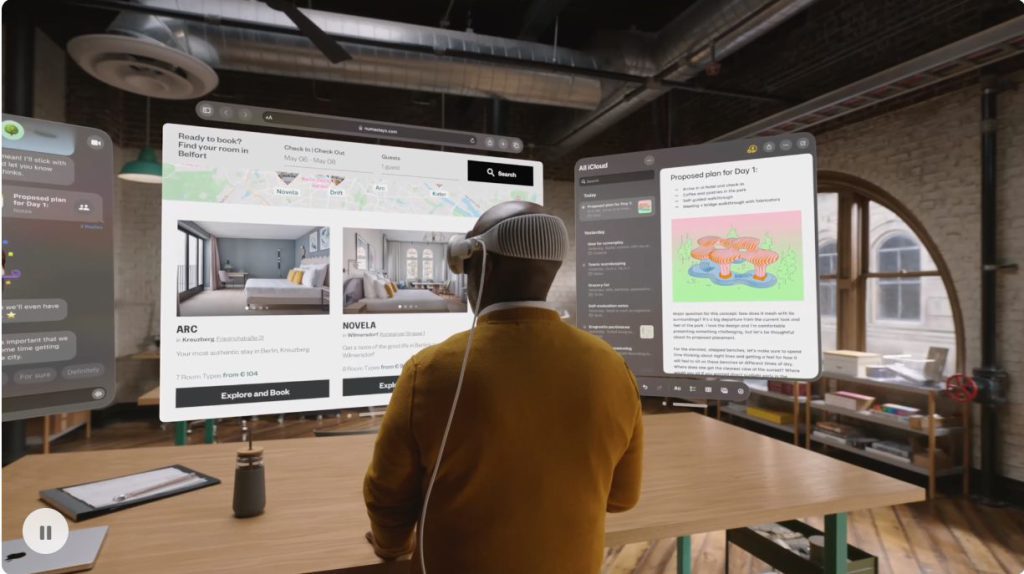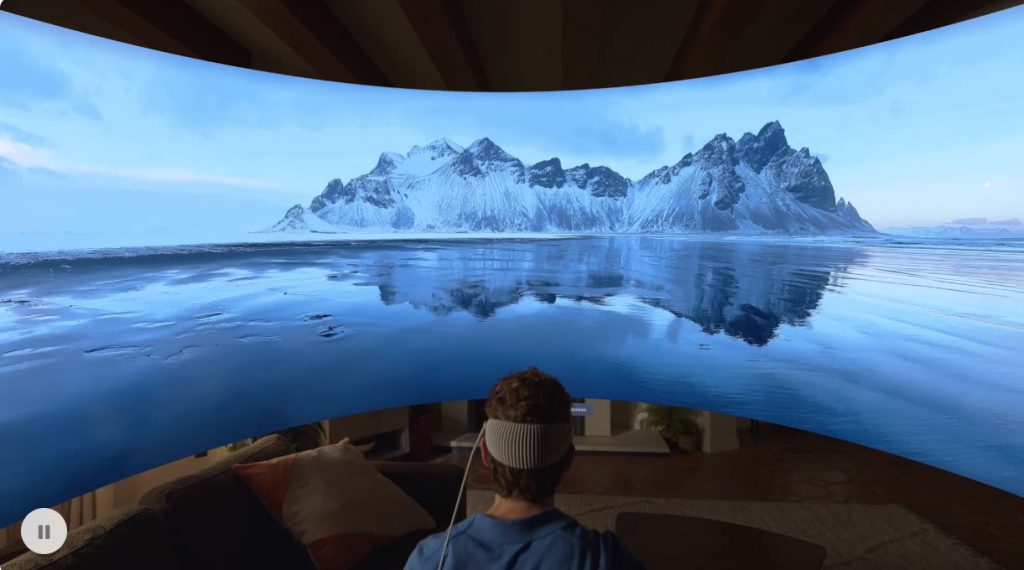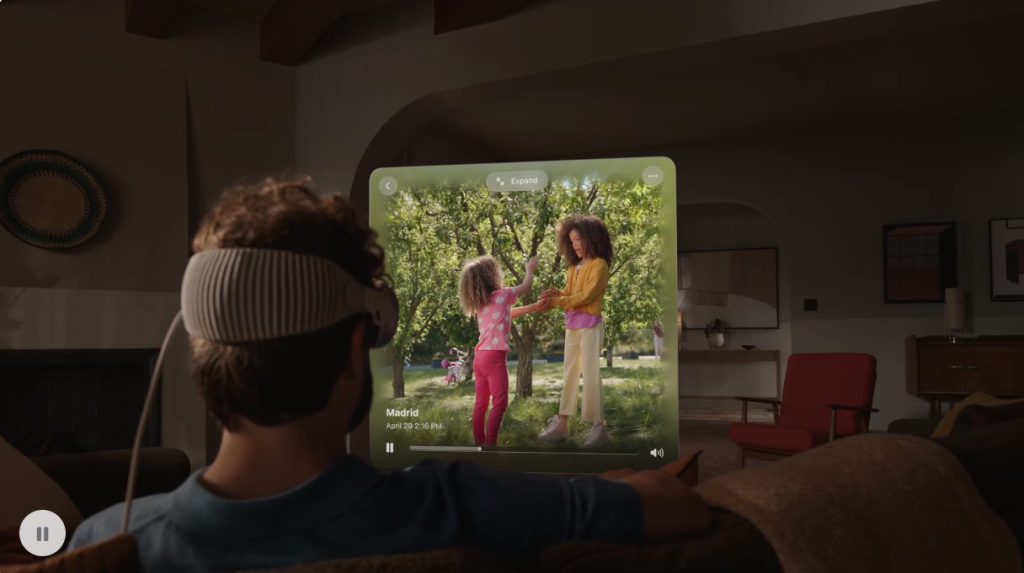Apple’s Vision Pro: How Marketers and Brands Can Leverage
Estimated reading time: 8 minutes
Apple's latest innovation, Vision Pro, offers a new way for brands to create top-of-the-line augmented reality experiences for their customers.
Design is now an integral part of any business that wants to stay ahead in the game. The increasing competition to capture and retain customers require brands to have unique and visually appealing designs that differentiate them from their competitors.
In this blog post, we will explore how brands can leverage Vision Pro to create a captivating user experience, drive sales, and boost their brand image.
Ogilvy MarTech is a marketing technology solution provider based in Sri Lanka. We are an award-winning web design and development company with over 10 years of experience. We specialize in product development, AR/VR, SEO consulting, SEO Audits, and more.
What is Apple Vision Pro?
Apple Vision Pro is a spatial computer or a headset powered by augmented reality (AR) and Virtual reality (VR) capabilities to provide users with an immersive customer experience.


Apple Vision Pro is a spatial computer, meaning that the device can display digital outputs on any surface in your immediate vicinity. There are no restrictions on the size of the viewing area, nor is a desk (or lap) required to position the device. That implies that watching a movie the size of a theater from a small area, like an aircraft seat.


Not only that, but the Vision Pro can also show 3D items in your current environment or teleport to different environments. It can make you feel like you’re living in a futuristic sci-fi movie.
If you're new to AR and VR, here's what you need to know about these technologies.
Augmented Reality (AR) is a technology that overlays digital elements onto the physical world in real time. It uses devices such as smartphones, tablets, or special headsets to add an interactive layer of visuals, sounds, and other sensory inputs on top of the user’s current environment. This technology can be used to create interactive 3D models or videos that are placed onto surfaces such as walls or floors.


On the other hand, Virtual Reality (VR) is a computer-generated simulation of a three-dimensional environment where the user can interact with objects and move through space.
Immersing the user in a virtual environment is the goal of virtual reality (or VR). With Vision Pro, you can change where you are and travel to a different location. A digitally generated 3D world takes the place of the video pass-through from your current environment. From that angle, it is obvious that this is a VR device.
Apple Vision Pro combines Augmented Reality (AR) and Virtual Reality (VR) technologies to create immersive customer experiences. It includes features such as gesture tracking, eye-tracking, and voice recognition, which enable users to interact with digital content naturally.
What are the differences between Apple Vision Pro and Google Glass?
The main difference between Apple Vision Pro and Google Glasses is the augmented reality (AR) capabilities. Both offer similar features - for example, object tracking, motion capture, facial recognition, and depth sensing. But Apple Vision Pro is designed to integrate seamlessly with Apple's existing hardware and software for an immersive user experience.
Google Glass, on the other hand, is more geared towards providing a basic augmented reality experience with limited features. And these it cannot create an immersive AR experience that captures customers’ attention and can engages them.
The idea behind augmented reality (AR) is to alter how you perceive your surroundings. By using smart glasses to display notifications, Google Glass achieved this. The Vision Pro achieves this by mounting 2D displays there and anchoring them so that they remain stationary no matter how your head moves. It seems to be there in the setting you're in right now.
In other words, Apple is enhancing a video clip of your environment rather than superimposing things on what you are directly witnessing. There isn't much of a difference to the user.
How Can Brands Leverage Apple Vision Pro?
Apple Vision Pro offers a variety of benefits for brands looking to create an immersive user experience. Here are some of the ways brands can utilize this tool:
01. Creating Augmented Reality Experiences
Augmented Reality (AR) experiences are now making their way into every aspect of our lives, from entertainment to shopping.
With Vision Pro, brands can leverage AR experiences to create a unique and immersive experience for their customers. Brands can now bring their products to life by creating lifelike 3D models. This means users can interact with the products before making a purchase.
This feature can help brands better influence the purchasing decision and drive sales by letting the customer experience the product before making a purchase.
02. Interactive advertisements
An effective advertisement must pique customers' interest and retain it long enough for them to want to know more. The introduction of Vision Pro will be no different from how we currently plan and organize advertising campaigns. Interactive advertisements will become more accessible to marketers thanks to AR and VR technology.
Imagine an advertisement for a burger restaurant. An ad where you could pick all the ingredients for your ideal burger and create it right in front of you—not by swiping your finger across a screen, but by physically constructing it in front of you. That would make anyone really hungry! Likewise, a furniture advertisement in an interactive environment that you could furnish and decorate. Or imagine an automobile advertisement with all the parts of the vehicle deconstructed. Even if a person decides not to finish the advertisement, it will undoubtedly have captured their interest.
Interactive advertisements are more memorable and entertaining than their 2D predecessors. Moreover, the added immersion provided by AR and VR will also help businesses leave a lasting impact on viewers. This will foster greater brand recognition and a closer bond between the company and its customers.
03. Boosting Brand Image
User experience (UX) is key to a brand's overall image. With Vision Pro, brands can create a seamless and intuitive user experience that will draw customers and keep them engaged with the brand. Traditional UX design tools can limit the user's imagination, leading to a less-than-optimal experience.
Vision Pro, on the other hand, allows brands to create a more fluid user experience that enables customers to interact with their products seemingly in real life. This advantage can help brands boost their credibility and image while increasing customer retention and loyalty.
04. Enhancing Product Development Efforts
Brands looking to launch new products can now use Vision Pro to test their current design with augmented reality. This new testing method can help brands visualize their product and study how it fits into a consumer's lifestyle before launching it. Moreover, the headset also provides better insights into how a potential consumer may interact with a new product, allowing the brand to optimize its product design before launching it into the market.
For example, for IKEA products, customers must assemble the furniture themselves. Even though it can be frustrating, it can be much easier with Vision Pro. Imagine purchasing a new shelving unit and being able to watch it being constructed in front of you rather than having to carefully study the tiny drawings to understand how it was made. Simulations that walk the customer through each phase would improve their experience and comprehension of the procedure.
It's possible that things like user manuals will eventually disappear. Customers might watch an interactive version of new technology, such as kitchen appliances, printers, or even lawnmowers, and define specific buttons or settings to learn more about what they do.
05. Reliable consumer information
Social media apps collect enormous amounts of data from user interactions with the platform, much like Google is able to learn a staggering amount about its customers from the way they use the internet. However, in terms of precise user data, Apple's Vision Pro is probably going to surpass anything we've ever seen in the past.
The headgear is covered in sensors in order to track the user's eye movements, hand motions, and environment. This has to do with the system's functionality, but businesses and marketers will find plenty of additional uses for it. A user's gaze patterns, gestures, attitudes, interactions, and even emotions are considered when providing insight into sincere and reliable consumer behavior. The Vision Pro will be able to enable hyper-targeted advertisements than targeted advertising.
06. Showcase virtual experience at conferences and events.
The Vision Pro might introduce an entirely new approach to the conventional showroom. Users may compare models while "visiting" showrooms from the comfort of their homes, gaining a much more accurate sense of each design than a 2D brochure could ever provide. This would also be beneficial for a range of companies, including auto dealerships and makers of kitchens and bathroom wear. Additionally, since venue capacity wouldn't be an issue, businesses and organizations could conduct virtual conferences and events that would reach a considerably wider audience.
The Vision Pro is still in its very early stages, and at $3500, the average consumer is unlikely to buy one right soon. But it's worth investigating the potential that this new system may bring to light. We’re interested in watching how this plays out and looking forward to all the innovative ways that brands will market themselves in the new environment.
Conclusion
Apple's Vision Pro is a game-changing tool for brands that want to stay ahead in the game. The device offers a unique way to create immersive and captivating user experiences, which can drive brand image and boost sales.
Brands can incorporate Vision Pro into their product development efforts, creating unique and seamless interactive experiences for their customers.
It is uncertain how Apple will develop the capabilities of the Vision Pro, but it only means that brands can leverage technology to create interactive user experiences.
Read Next: How Generative AI Is Changing The Game For Marketers




